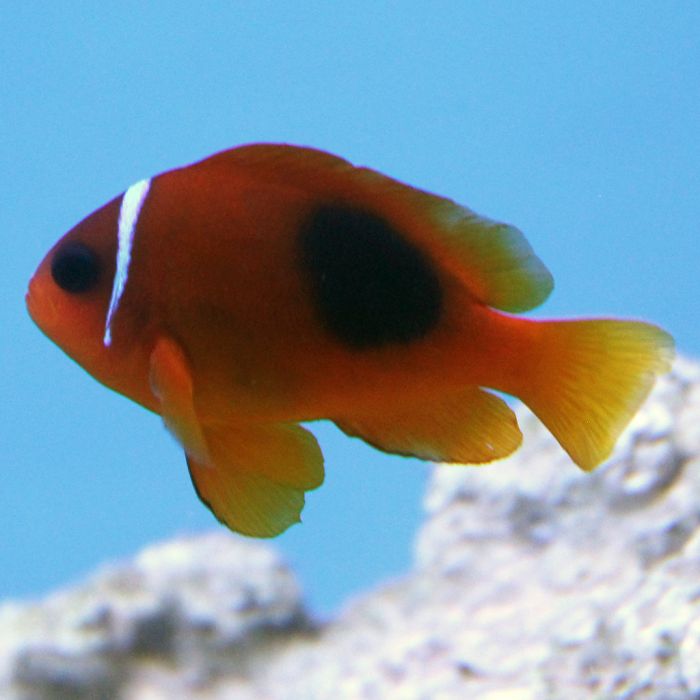Tomato Clownfish (Tank Raised)
Clownfish are hardy and easy to keep, and are a perfect first fish for a new aquarium. Most species are available tank bred. They are omnivorous and easy to feed on high quality food items such as frozen Mysis shrimp, enriched brine shrimp, and dry foods, preferably more than once a day.
Clownfish are well known for their charming wiggling way of swimming, which serves them well in their natural home, within the stinging tentacles of an anemone. The exact reason clownfish are not stung is not known, but it may have something to do with the fish's slime coat. In the ocean, without the protection of the anemone, clownfish would be easily picked off by predators. In an aquarium the anemone, which has much more demanding needs than the fish, is not necessary. The fish may instead host with a soft coral such as furry mushrooms, toadstool leather, colt coral, or even within macro algae. It may chose to host within large polyp stony corals such as Euphyllia sp. as well, however the coral does sting the fish. We don't recommend encouraging them to host with delicate corals such as bubble or brain type corals, which the fish may injure with its constant swimming. Even with an anemone in the aquarium the fish will chose to host with whichever home it likes best.
Clownfish may be kept singly, or more commonly in pairs, in which case the smallest more submissive fish remains a male, and the largest most dominant fish changes sex to become a female. Clowns are related to damselfish, and pairs will not tolerate other species of clownfish within their territory (which may include 50 gallons of space or more) and may fight to the death. They are prone to parasitic infections such as Brooklynella and velvet.
It is common for pairs of clownfish to spawn in the aquarium, and pairs in their prime may lay eggs near their nest site as often as every two weeks. It is not necessary to interfere with the parents, who may become more aggressive at this time, chasing away other fish and nipping at their owner's hands. It is possible, though laborious, to raise the young fish at home. If a breeding effort is to be attempted it is important to ensure the parent fish are of the same species in order to maintain genetic purity for future generations.
Tomato complex clownfish are typically more aggressive than most other clownfish. They may grow up to 4.5 inches and need an aquarium at least 30 gallons. The different types of Tomato complex clownfish include Cinnamon, Fire, and Tomato among others. Species from other complexes in their territory usually causes fighting.
They may host with nearly any anemone species, except Atlantic species. Most popular hosts are Magnifica/Ritteri (Heteractis magnifica), Sebae (Heteractis crispa) and Bubble Tip (Entacmaea quadricolor).
One of the brightest clownfish, the Tomato is the color of fresh vine ripened fruit. Juveniles may have dark fins, but older fish become brighter as they age. Adults have a single white cheek stripe, while juveniles may show more than one.
















